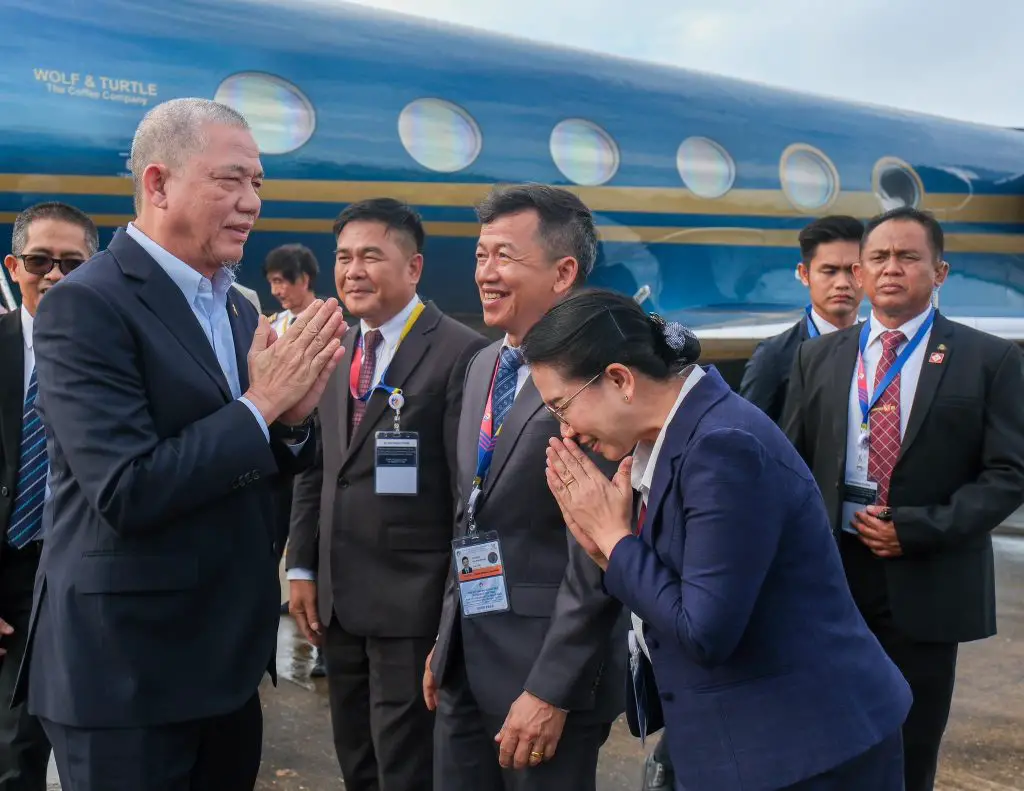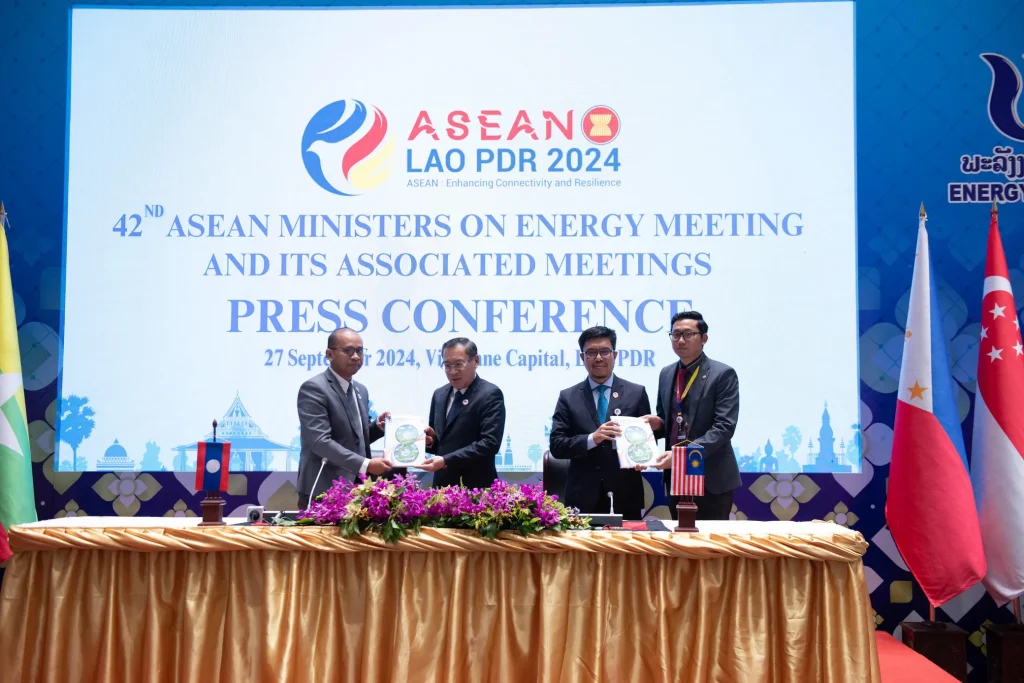The ASEAN Centre for Energy (ACE) has marked a significant milestone with the launch of the 8th edition of The ASEAN Energy Outlook (AEO8) during the 42nd ASEAN Ministers on Energy Meeting (AMEM) and Associated Meetings in Vientiane, Lao PDR. This event, held in conjunction with the 24th ASEAN Energy Business Forum (AEBF-24), underscores the region’s commitment to sustainable energy development.
AEO8, a flagship report developed through close collaboration between ACE, ASEAN Member States, and various partners, serves as a crucial tool in implementing the ASEAN Plan of Action for Energy Cooperation (APAEC). The report offers a comprehensive analysis of the energy landscape across ASEAN, detailing pathways to achieve both national and regional energy targets up to 2050.
The significance of this launch was highlighted by the presence of key figures such as Deputy Prime Minister and Minister of Energy Transition and Water Transformation of Malaysia, Datuk Seri Fadillah Yusof. In his capacity as Vice Chairman of the 42nd AMEM, he emphasized several critical points, including the ASEAN Power Grid (APG) initiative. This initiative is set to be a primary focus during Malaysia’s ASEAN Chairmanship in 2025, aimed at driving energy transition both nationally and regionally. Yusof also stressed the importance of inclusive and equitable energy development, aligning with Malaysia’s aspirations towards net-zero greenhouse gas emissions. He specifically mentioned key strategies such as the Energy Transition Roadmap (NETR), the Hydrogen Economy Roadmap (HETR), and the New Industrial Master Plan (NIMP).
The opening ceremony saw H.E. Phosay Sayasone, Minister of Energy and Mines of Lao PDR, underscoring the importance of AEO8. As the ASEAN Chairman for the year, he recognized the report as a fundamental guide in the journey towards achieving a resilient and sustainable energy future. Sayasone emphasized that AEO8 not only aligns with Lao PDR’s national objectives but also reinforces ASEAN’s shared vision for sustainable development.
The development of AEO8 was made possible through the crucial data provision by the ASEAN Member States (AMS) Working Group and active consultation with the Regional Energy Policy and Planning Sub-Sector Network (REPP-SSN). Building upon its predecessor, the 7th ASEAN Energy Outlook launched in Phnom Penh, Cambodia in 2022, AEO8 provides a more in-depth analysis and projections for each energy sector in ASEAN. It covers a wide range of areas from electricity to energy efficiency, spanning the period from 2022 to 2050, and aligns closely with ASEAN’s efforts towards carbon neutrality.
Beni Suryadi, Acting Executive Director of ACE, emphasized the report’s significance in advancing energy security, accessibility, affordability, and sustainability across the ASEAN region. He highlighted a striking projection from AEO8: energy demand in 2050 is expected to be 2.6 times higher than in 2022. This dramatic increase underscores the urgent need for coordinated efforts among ASEAN Member States to transition towards cleaner energy sources while maintaining economic growth and addressing the region’s escalating energy needs.
Recognizing the diverse energy demands and situations across each country, AEO8 presents four distinct scenarios for a more comprehensive analysis. These include the Baseline Scenario (BAS), which explores the pathway of no additional efforts on energy efficiency and renewable energy policy; the AMS Target Scenario (ATS), highlighting the impact of current national targets and policies; the Regional Aspiration Scenario (RAS), which focuses on least-cost optimization in the power sector while maintaining 2025 APAEC targets; and the Carbon Neutrality Scenario (CNS), which emphasizes decarbonization efforts using optimization of low-emission technologies.
Key findings from AEO8 reveal that ASEAN’s end-use consumption continues to be dominated by the industry and transport sectors, with coal and oil products playing significant roles respectively. The report projects that overall final energy demand will grow 2.6 times from 2022 to 2050. Under the ATS, which reflects current APAEC targets, the region is expected to achieve 39.6% renewable energy share in installed power capacity and approach 31% energy intensity reduction by 2025. By 2030, renewable energy in total primary energy supply could reach 23.5%, while its share in installed capacity could hit 44.1%, with energy intensity reduction potentially reaching 40.2%.
Interestingly, AEO8 also highlights the emergence of new technologies in the ASEAN energy mix. In the Carbon Neutrality Scenario, nuclear and tidal & wave energy are projected to enter the installed capacity mix starting from 2032 and 2035, respectively. New fuels in the demand sector, including hydrogen and Sustainable Aviation Fuel (SAF), are expected to be introduced in the region’s total final energy consumption by 2023 and 2025, respectively.
The AEO8 stands as a critical resource, designed to empower ASEAN Member States in their pursuit of energy security, accessibility, affordability, and sustainability. By providing detailed analyses and projections, it aims to guide the region through the complexities of the global energy transition while addressing the unique challenges that lie ahead. As ASEAN continues to grow and develop, the insights provided by AEO8 will be invaluable in shaping a sustainable and resilient energy future for the region.
Readers can access the report by clicking here.




